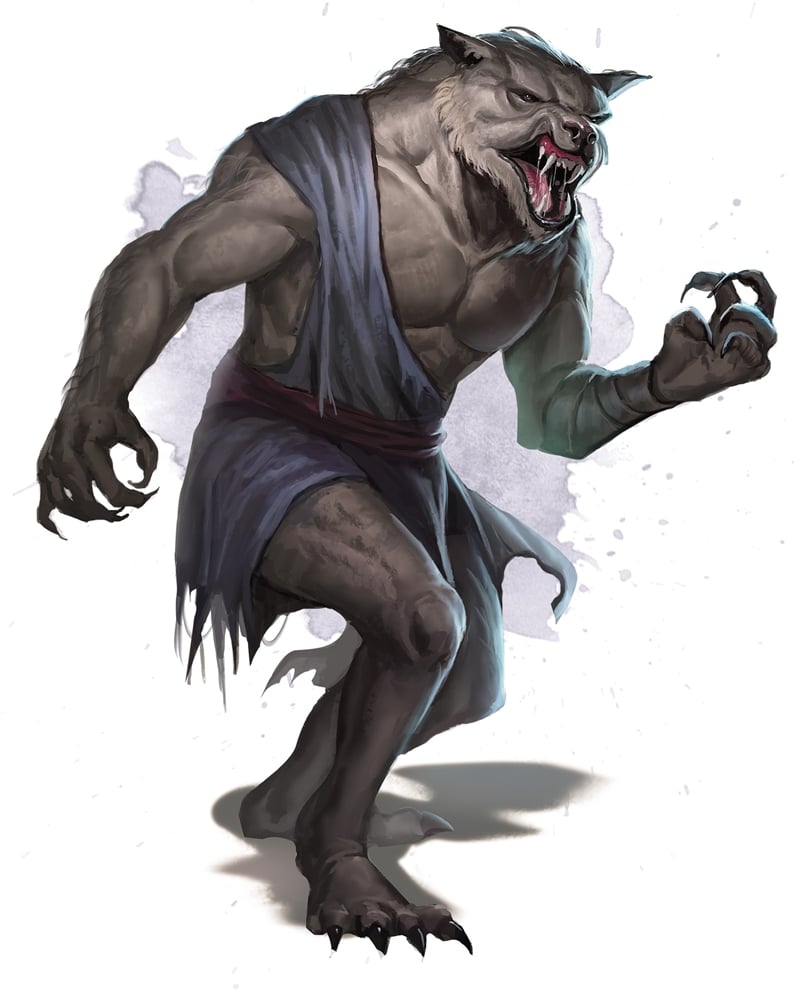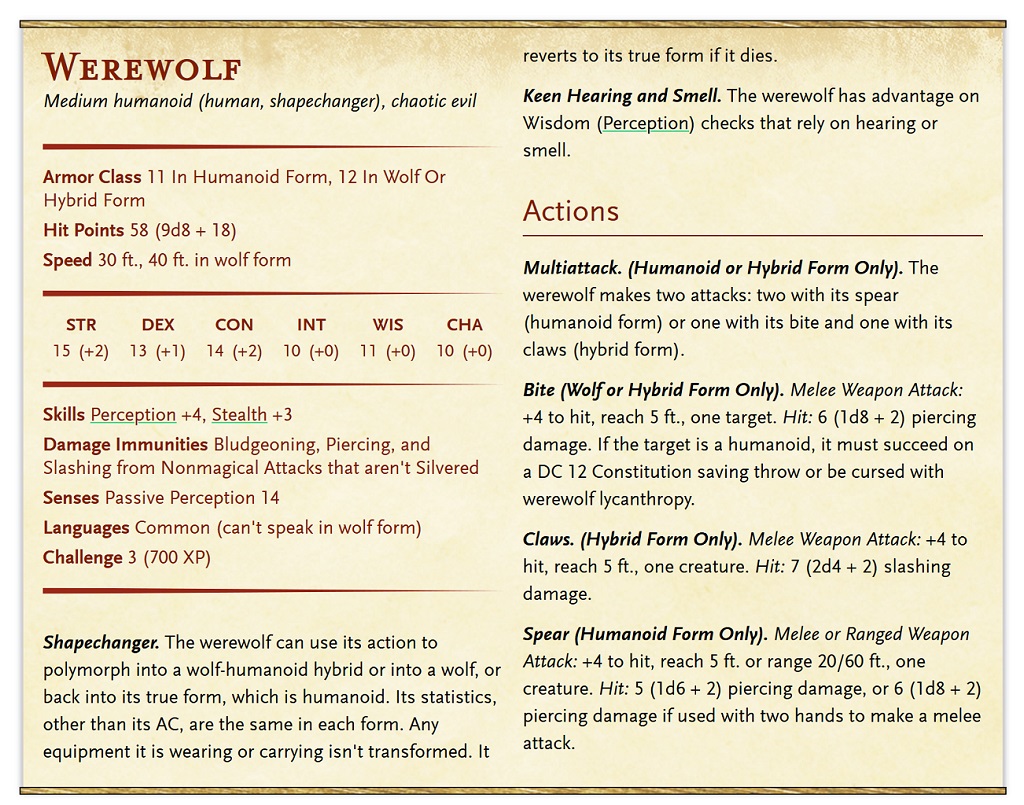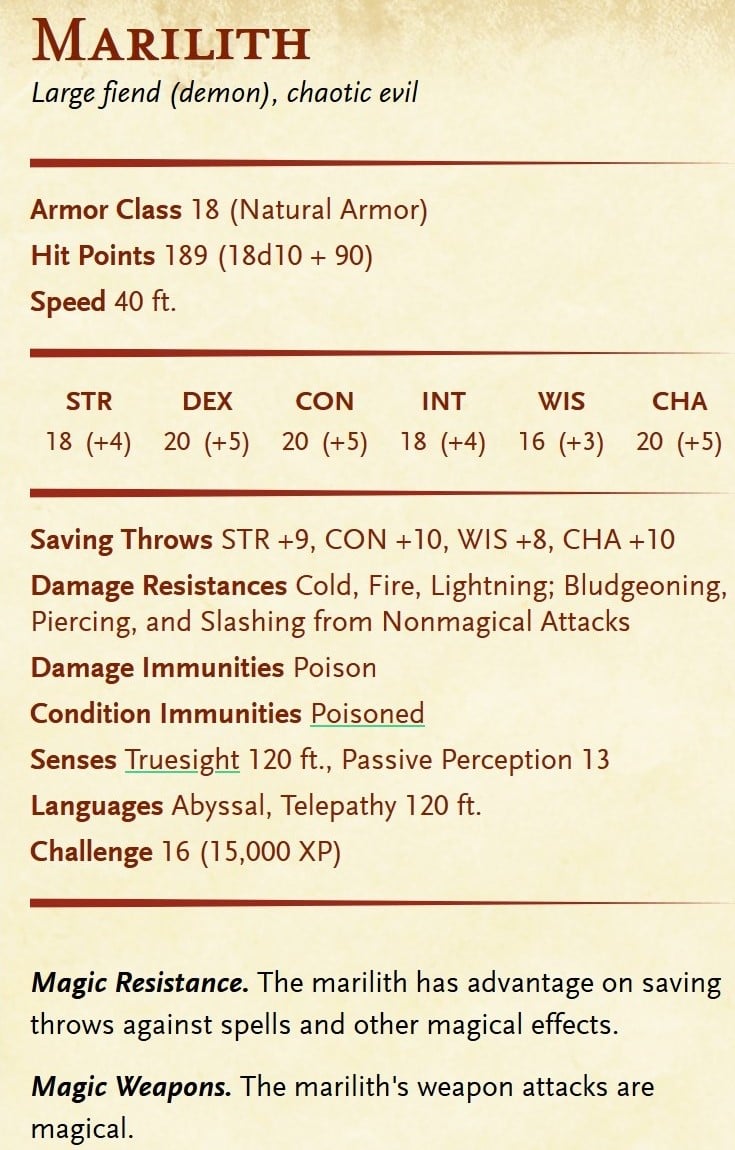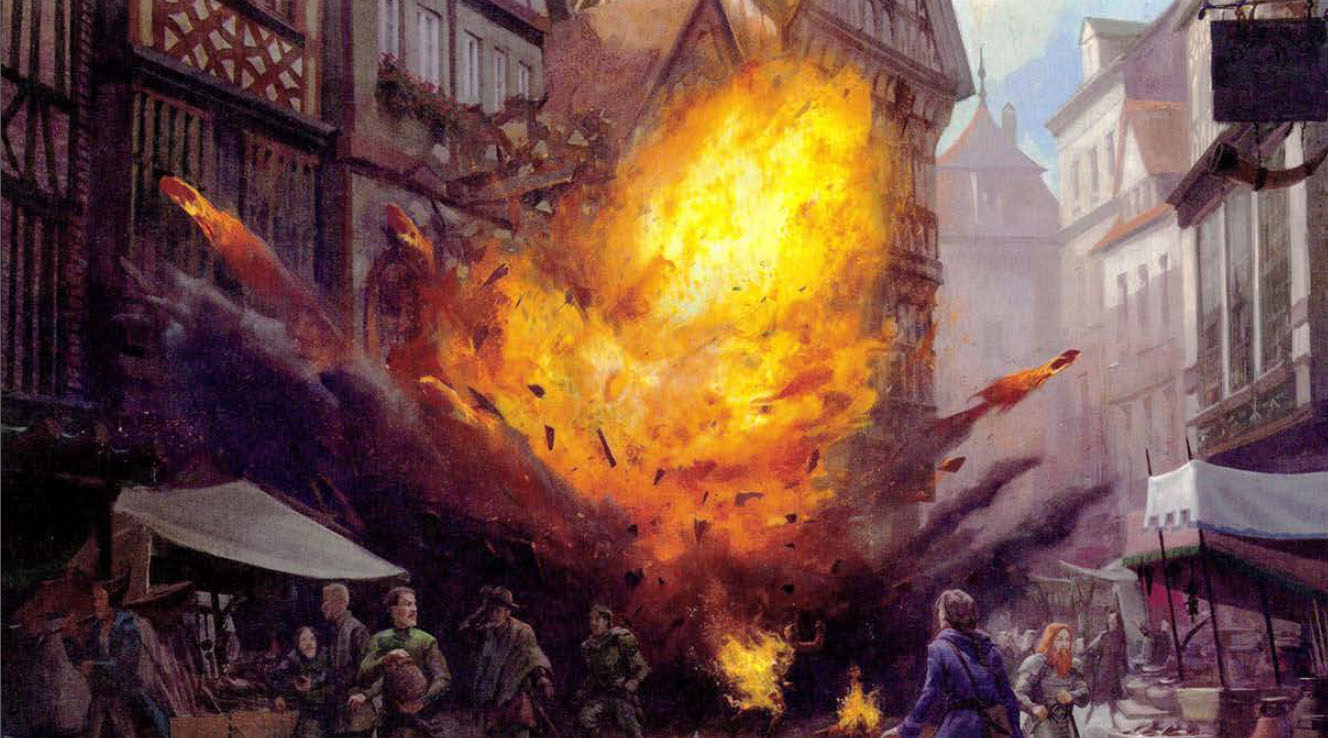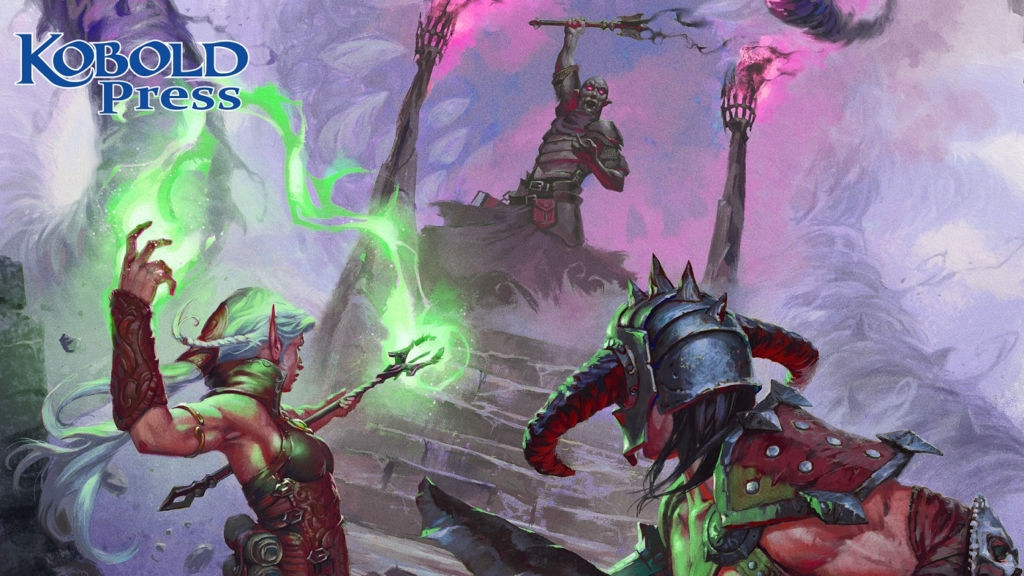D&D: Werewolves Can’t Hurt Each Other – 5E Rules Oddities
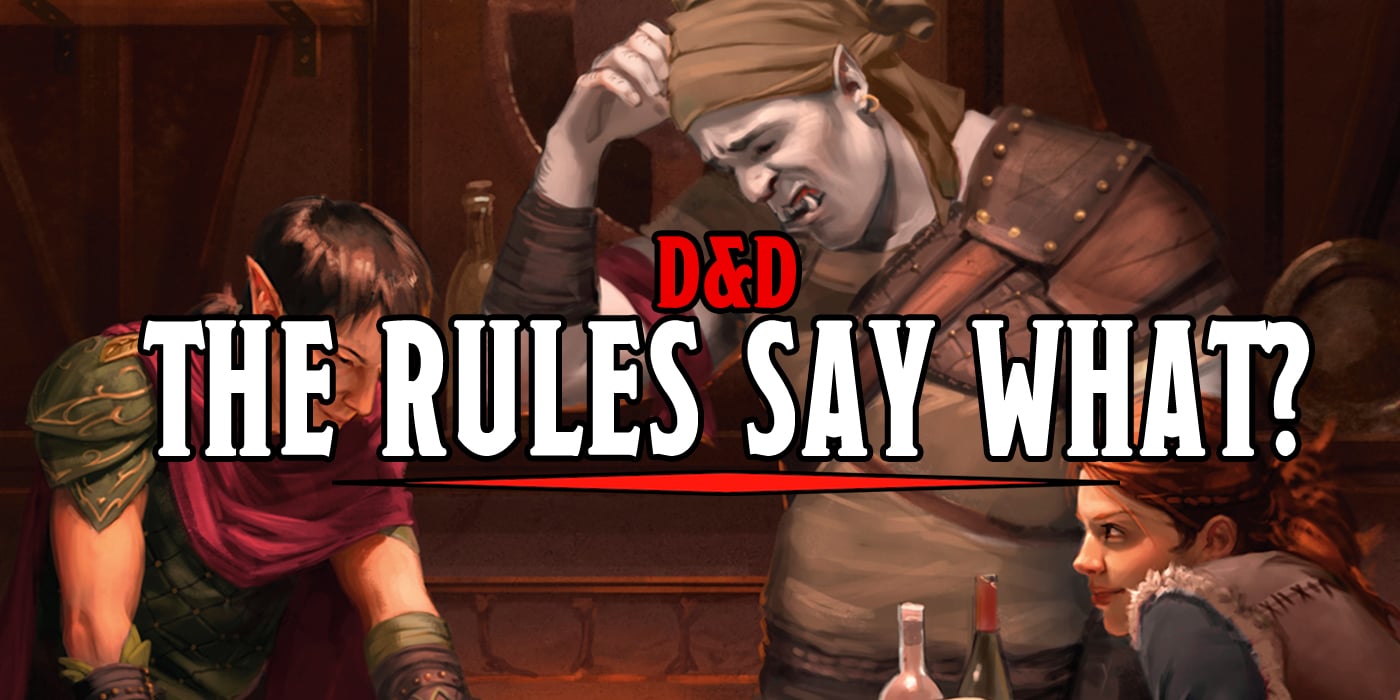

In 5th Edition, werewolves can only hurt another werewolf by throwing them off a cliff. A strange tale of rules oddities in Dungeons & Dragons.
The rules of D&D 5th Edition are designed to set up a world of fantasy adventure, where danger and treasure lie around every corner, and cool stories of heroes abound. And, for the most part, they do that. But then sometimes they build a world where if werewolves want to fight each other, they have to toss each other off of high cliffs, roofs, platforms, or otherwise. Come with me on this journey into the world of the rules of 5th Edition.
Werewolves And Damage Resistance
Werewolves are an iconic monster, and not just in D&D. These poor souls are afflicted with the curse of Lycanthropy, causing an otherwise normal human to transform into a wolf-like creature, depending on what version of the mythology you’re working with, and when the moon is out, they go on a rampage trying to tear folks apart. Aside from that little tiny con, being a werewolf is nothing but pros. After all, if you go by the book you get a lot for being a werewolf.
As you can see, you get a 10ft speed boost while in wolf form, you gain heightened senses that give you advantage on perception checks when you need to see or hear something–and the average commoner gains some pretty stellar combat abilities. Multiattack lets you attack a few times, depending on whether you’re humanoid or hybrid. But most importantly, look over at the stat block where it mentions Damage Immunities and everything shifts.
Werewolves are immune to damage from bludgeoning, piercing, and slashing from nonmagical attacks that aren’t silvered. That seems like such a simple statement, but there’s so much implied by it. In the context of how werewolves might face other adventurers, it just means you can’t hurt them without silver or magic weapons. But werewolves don’t feature the “magical attack” ability, which other creatures, like Mariliths have in their stat blocks.
Which means, according to the Rules As Written, werewolves can’t hurt each other. No wonder the Twilight movies play out the way they do. If you’re thinking that you vaguely remember something about creatures with damage resistance having their attacks count as magical, you’re remembering a rule from 3/3.5 that isn’t there anymore.
So, rules as written, Werewolves can’t hurt each other with their claws, bites, or weapons. And given that magic items are supposed to be rare enough as it is in the world of D&D, it means that fighting a rival werewolf is, for the most part, fruitless. Until you realize that Werewolves are only immune to damage from attacks. Which means if they can find a nonattack way to deal damage to another werewolf, they’re golden.
Drop it like it’s hot
And one of the easiest ways to do that is with falling damage. For every ten feet you fall, you take 1d6 damage, and high places are available aplenty in D&D. So if a werewolf can toss another werewolf off a roof, that’ll shave off a few of its 58 hit points. Which means that werewolf lairs are sure to have very tall roofs, because how else are they going to deal with territorial rivals. It’s basically like a game of Fortnite, who can get up the highest and literally drop their opponent first.
Or failing that, if you can start a fire, or create some other environmental hazard, you’ve got a good chance of taking down a werewolf, as long as you can hold the where they need to be.
Keep that in mind the next time you’re facing down a werewolf and you’ll have a leg up. Or, you know, just use magic, because that makes fighting monsters less about solving a puzzle and more about ticking a box, which is exactly what you want to be doing in a game that’s all about creativity and the imagination.
Happy Adventuring!

